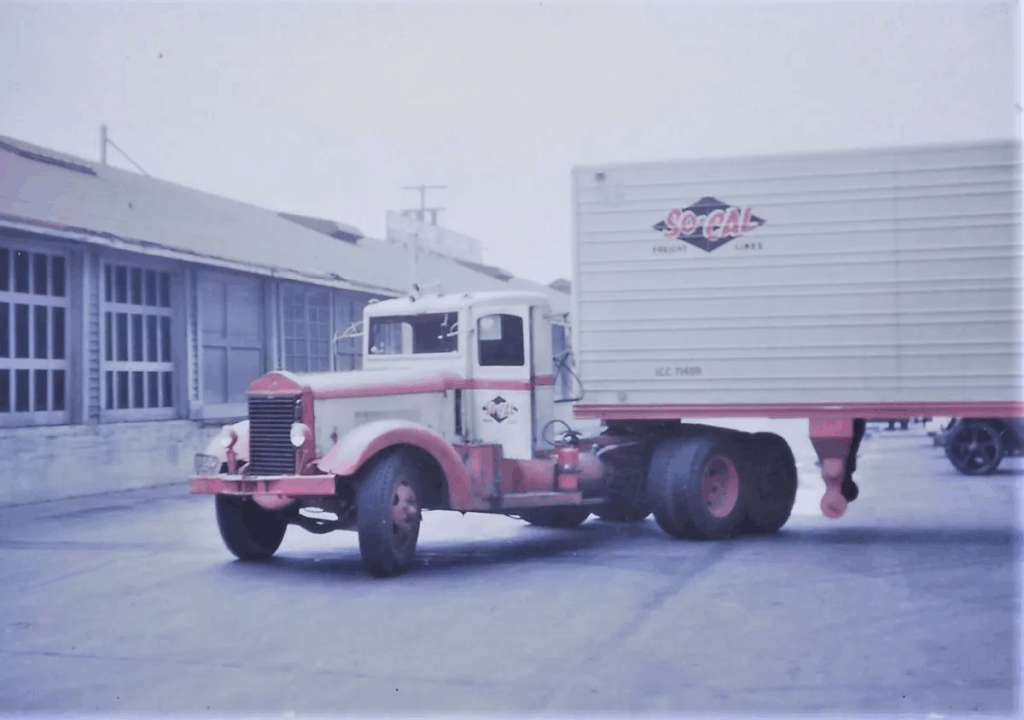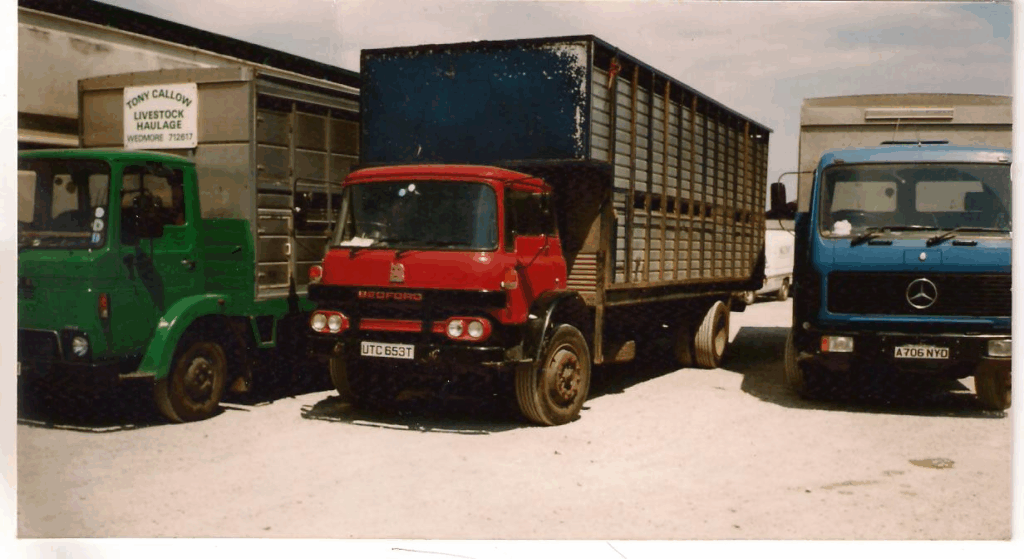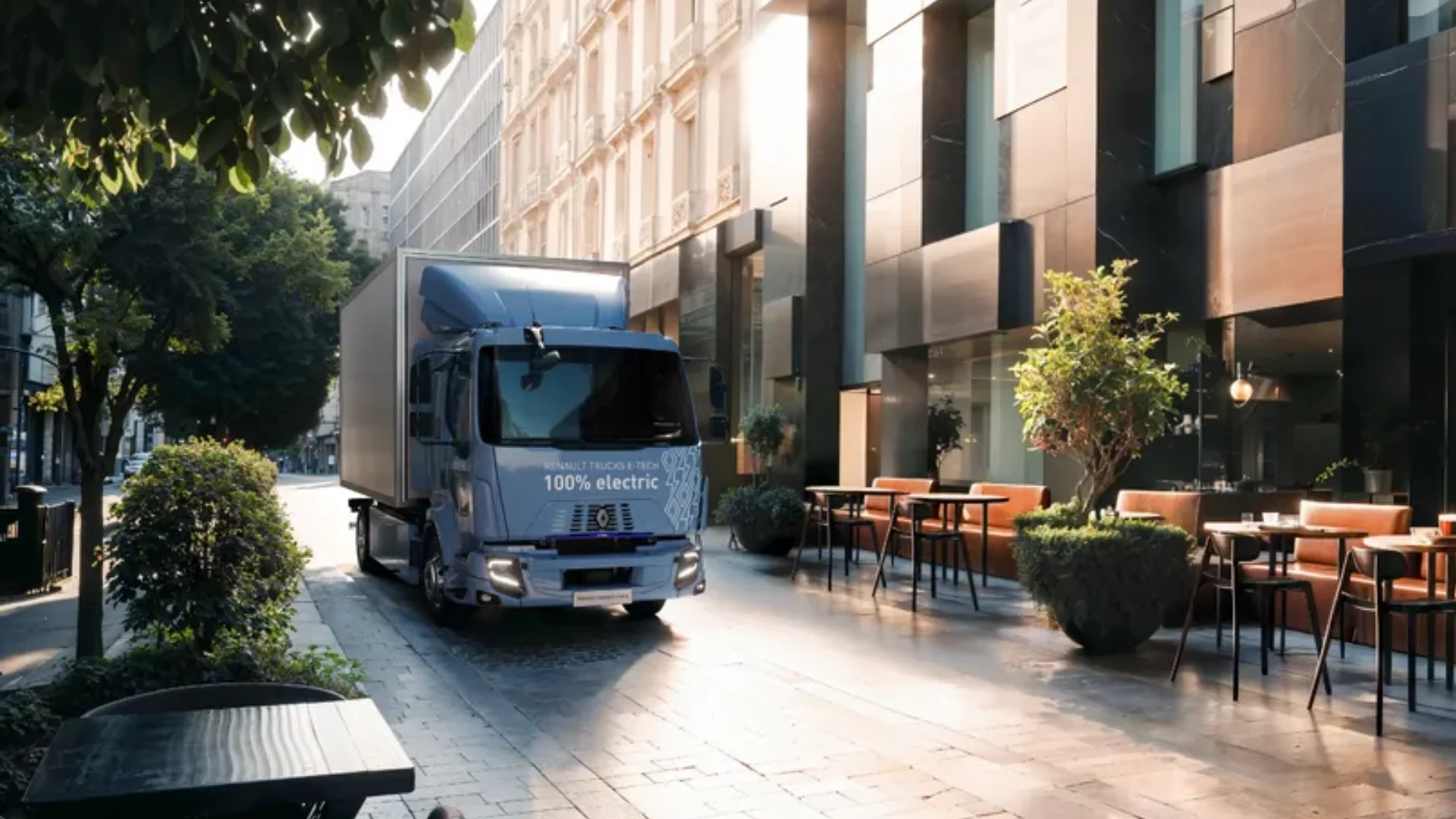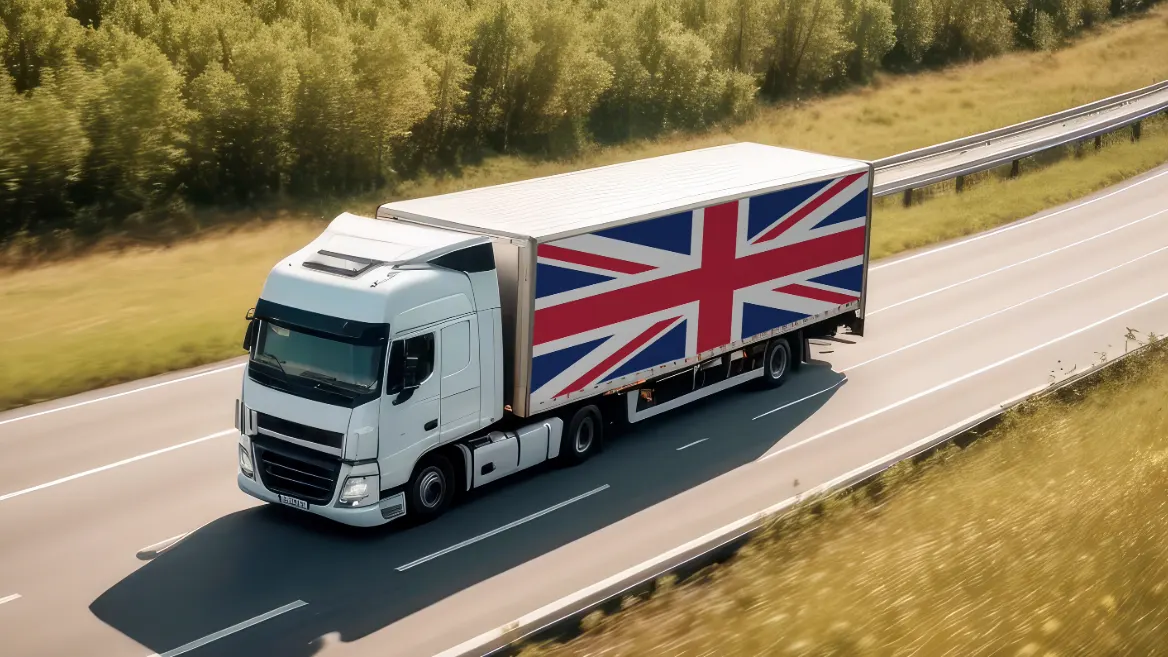Ask any driver what separates European and American trucks and you’ll get a passionate answer. Some swear by the comfort of a big sleeper cab, others by the agility of a cabover.
And one looks like a clean, aerodynamic workhorse. The other looks like it’s about to transform into a robot and save the world.
These preferences didn’t appear by accident. They’re the result of decades of design shaped by infrastructure, laws, and driving habits on both sides of the Atlantic.
Here’s how it all came about.
What we’ll cover
A short history of truck design
The modern truck owes its existence to an American inventor. In 1898, Alexander Winton of Cleveland, Ohio, built the first semi-truck to deliver cars to his customers without putting miles on them. His design — a motorised carriage pulling a trailer — laid the foundation for the industry on both sides of the Atlantic.

As the automobile market grew, so did freight. By 1913, Massachusetts had introduced the first state weight limit, set at 28,000 lb. Around the same time, European manufacturers like Daimler-Benz, Volvo, and Scania began developing trucks adapted for Europe’s narrower roads and city streets.
The US interstate highway system, launched in 1956, was a turning point. With wide, open roads, American manufacturers built longer, heavier trucks. By 1982, the federal weight limit had reached 80,000 lb, and the cab was excluded from overall length limits. That’s when cabovers largely disappeared from the US — drivers could finally stretch out in long-nose tractors.

Meanwhile, Europe doubled down on cabover trucks to meet strict length laws and maximise trailer space.
By the 1960s, the cabover layout was the standard across the continent.

Why European and American trucks look so different
The most obvious difference today is cabover vs conventional.
Cabover vs conventional
- European trucks: cabover, with the cab above the engine for a shorter overall length.
- American trucks: conventional, with long bonnets housing the engine in front.
This affects everything from visibility and manoeuvrability to maintenance access.
European cabs can swing through tight depots, while American rigs give drivers a smoother ride and easier engine access.
Roads, rules and real estate
- Europe’s network: narrow lanes, older infrastructure, and urban deliveries.
- America’s highways: long, straight stretches, wide truck stops, and open interchanges.
And important:
- European rules limit overall lorry dimensions.
- US rules focus on trailer length, not the cab.
That single difference is why US cabovers faded away while they remain dominant in Europe.
Comfort, cab size and driver lifestyle
The design of European and American trucks also reflects driver lifestyles.
USA: Home on the road

American drivers cover huge distances, sometimes thousands of miles in one trip. Their cabs often include:
- Full-size sleeper bunks
- Fridges, microwaves and coffee machines
- TV setups, wardrobes, even desk space
These cabs are designed to be lived in for days at a time.
European cabs: designed for the job

European hauliers may travel internationally, but the average trip is shorter, there’s more truck parking available, and many drivers return home more often.
Cab space is efficient rather than sprawling, with features like ergonomic bunks, climate control, and advanced infotainment. Comfortable, but built for practicality.
Engineering differences
Beyond looks, there are big contrasts in how trucks are built and perform.
| Feature | European trucks | American trucks |
|---|---|---|
| Engines and power | 11–13 litre engines, optimised for fuel efficiency and emissions compliance | 12–15 litre engines (some over 16 litres), prioritising torque for long runs |
| Torque and gearing | Higher rev ranges, with AMTs optimising shift points | Low-rev, high-torque gearing (1,200–1,400 rpm) for steady highway driving |
| Gearboxes | Automated manuals standard (e.g. Volvo I-Shift, Scania Opticruise) with GPS cruise | Older fleets still run 18-speed manuals; modern fleets shifting to AMTs |
| Suspension and ride | Shorter wheelbases, firmer suspension for agility in depots and cities | Longer wheelbases, air suspension for smoother highway comfort |
| Braking systems | Disc brakes and EBS widely adopted earlier | Drum brakes still common; discs slowly becoming more widespread |
| Aerodynamics | Curved cabs, side skirts, deflectors for reduced drag and lower fuel burn | Boxier designs prioritising durability and cooling, less focus on aero |
| Turning circles | Tight turning radius, suited to yards, roundabouts and narrow roads | Wider turning radius, fine on highways but less suited to urban manoeuvring |
Weight limits and payload capacity
This is where the divide is sharpest.
- US federal law caps trucks at 80,000 lb / 36,287 kg — unchanged since 1982. Bridge safety is the main concern.
- Finland recently raised its limits to 167,000 lb / 75,749 kg and 113 ft long.
- Australia’s road trains go even further, hitting 300,000 lb / 136,077 kg and 175 ft in length.
The result? Europe and Australia are experimenting with high-capacity trucks (HCTs) that move more freight per driver, reducing HGV carbon emissions per ton-mile.
The US is effectively frozen at 1980s capacity levels.
Safety and technology
- European trucks are fitted with conspicuity markings, curtain airbags, advanced emergency braking, lane departure warning, and cyclist protection.
- US trucks lag behind — most have steering wheel airbags at best, with fewer mandated safety features.
It’s not just about the truck – it’s the culture
Design isn’t the only difference. Trucking culture evolved differently too.
Movie trucks and chrome kings
In the US, trucks became cultural icons in the 60s and 70s.
With CB radios, trucker protests, and films like Convoy and Smokey and the Bandit, the long-nosed rig became a symbol of freedom.
Custom chrome, air horns and paint jobs are still part of the scene.
EU trucks: less flash, more function
Europe doesn’t share the Hollywood glamour.
Scania, Volvo, MAN and Mercedes focus on reliability and performance.
Pride still exists, but it’s more about subtle LED bars, paintwork, and keeping the cab spotless than murals of wolves or flames.
In short: same job, different journey
At the end of the day, both European and American trucks are designed to move freight.
But the influences shaping them — roads, rules, culture, and regulation — have taken them down very different paths.
- European trucks: compact, agile, efficient, loaded with safety tech
- American trucks: powerful, spacious, driver-focused, with strong cultural identity
- Both reflect the environments they were built for
And while you won’t see a Peterbilt squeezing into a Paris depot, or a Scania starring in a Hollywood chase scene, both get the job done in their own way.
Frequently asked questions
What’s the difference between European and American trucks?
European trucks are usually cabover, optimised for manoeuvrability and efficiency under strict length laws. US trucks are mostly conventional, with long bonnets, larger engines and spacious cabs.
Why do US trucks have long noses?
US rules exempt cabs from length limits, so drivers favour conventional tractors for comfort and maintenance. The design also improves noise isolation and space for sleeper cabs.
Are cabover trucks used in the USA?
They were popular until the 1980s, when length rules changed. Today they’re rare in the US, mostly surviving in niche fleets or as vintage models.
Which trucks are more comfortable for long-haul drivers?
US trucks usually offer more space and onboard living facilities. European trucks are comfortable too, but layouts are more compact and functional.
Why aren’t American trucks used in Europe?
Their size makes them impractical. US rigs struggle with turning circles, urban roads, and EU length regulations. Cabovers are simply better suited to Europe’s environment.




